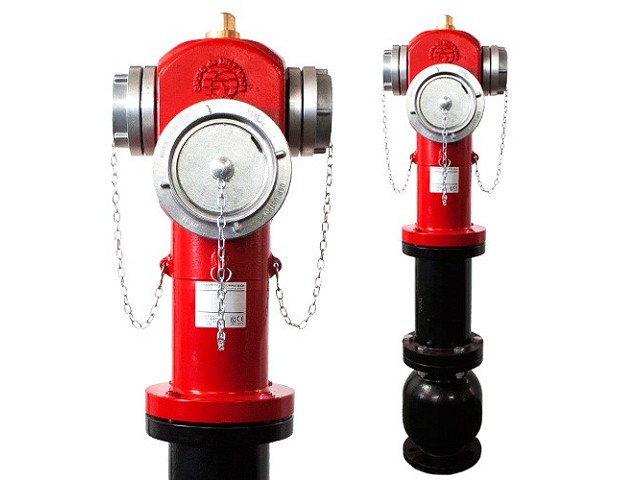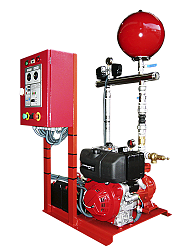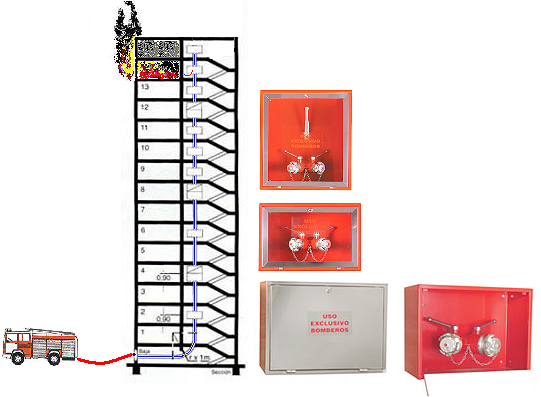Fire hydrants
Are devices connected to a water supply network intended to supply water in case of fires. As a general rule the hydrants are placed outside the buildings and duly marked. Hydrants can be column or buried and can be wet or dry. For the effective use of hydrants it is necessary
Fire pressure groups
Drive equipment or pressure groups are responsible for boosting water contained in deposits to fire protection facilities. These equipment are designed to meet the necessary flow and pressure needs according to the risk design criteria to be protected and the applied regulations. Depending on the type of motor, they can be classified as electric or diesel, although one of each type is also usually installed so that a cut in the power supply does not cause a malfunction or even the cancellation of the fire protection system.
Dry fire columns
The dry column is an installation for exclusive use of firefighters normally applied in high buildings. It is formed by an ascending pipe of 80 mm in diameter in galvanized steel, which runs through the staircase, from a connection on the facade. The column is composed of a water intake and mouths of exits in plants and mouths of plant outlets with a sectioning key to cut the supply to upper plants if it is not necessary for the water to reach them.


